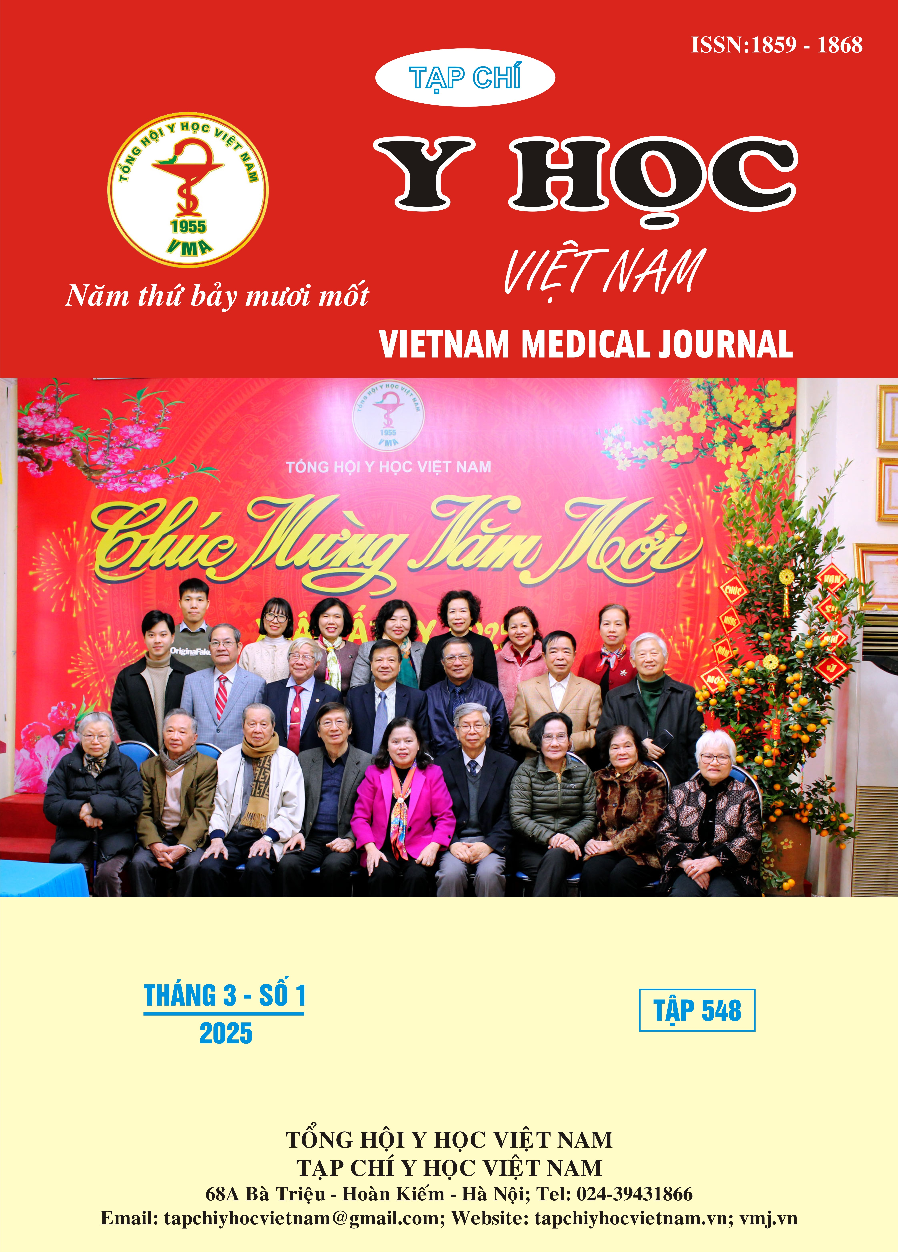RESULTS OF TREATMENT OF BACTERIAL KERATITIS WITH LEVOFLOXACIN 1.5% OPHTHALMIC SOLUTION AT THE VIETNAM NATIONAL EYE HOSPITAL
Main Article Content
Abstract
Objects: To evaluate the treatment outcomes of bacterial keratitis with 1.5% Levofloxacin ophthalmic solution at the Vietnam National Eye Hospital. Subjects and methods: A prospective, non-controlled clinical intervention was conducted on patients diagnosed with bacterial corneal ulcers through Gram stain and culture. The patients were treated with Levofloxacin 1.5% (Cravit®1.5%) ophthalmic solution, administered hourly until the purulence of the corneal ulcers were decreased and epithelialized, and the frequency of application was then reduced to 10 times per day or less, depending on clinical response. Once the ulcers had completely epithelialized, Levofloxacin 1.5% solution were continued 4 times per day for 1-2 weeks before discontinuation. Symptoms and signs were assessed during follow-up visits on days 1, 3, 7, 15, and at subsequent visits. Treatment outcomes were evaluated based on symptom improvement, average epithelialization time, changes in ulcer characteristics, drug side effects, complications, and the need for any additional surgical interventions. Results: From June to December 2022, 38 eyes of 36 patients (17 males, 19 females) with bacterial keratitis were enrolled in the study. The mean age of the patients was 29.6 years (11-71 years old). The average duration of onset was 6 days. Most patients presented with symptoms at the onset, including blurred vision (52.6% below 20/400), pain (94.7%), foreign body sensation (92.1%), tearing (89.5%), photophobia (73.7%). All of eyes tested positive for Gram-negative bacilli on Gram stain of ulcer scraping samples, with 5 eyes also showing positive culture for Pseudomonas aeruginosa. Ulcers were classified as mild in 55% and moderate in 45 % of cases. The average treatment duration was 14 days (3-45 days) with 100% cure rate through medical therapy alone, without surgical intervention. 64.3% of eyes achieved a visual acuity greater than 20/400. After 3 days, 32 eyes (84.2%) showed improvement in pain and photophobia, with 100% improvement after 7 days. The average epithelialization was 7.3 days. No adverse effects were reported during the treatment. Conclusion: Bacterial corneal ulcers responded well to treatment with Levofloxacin 1.5% ophthalmic solution and no reported adverse effects during the treatment period.
Article Details
Keywords
keratitis, Levofloxacin 1.5%
References
2. PinnitaTanthuvanit NK, Usanee Reinprayoon. The efficacy and safety of 0.5% Levofloxacin versus fortified Cefazolin and Amikacin ophthalmic solution for the treatment of suspected and culture-proven cases of infectious bacterial keratitis: a comparative study. Asian Biomed. 2011;5:77–83.
3. Chie Sotozono HH, Yoshitsugu Inoue YO. Phase III Clinical Trial of 1.5% Levofloxacin Ophthalmic Solution (DE-108) in Bacterial Conjunctivitis and Bacterial Keratitis. J Eye.
4. Dimitri T. Azar, Joelle Hallak, Scott D. et al. Microbial Keratitis. Principles and Practice of Infectious Diseases. Elsevier;
5. Rita A Gangwani RLMW. New Treatments for Bacterial Keratitis. J Ophthalmol. 2012
6. Constantinou M, Daniell M, Snibson GR et al. Clinical efficacy of moxifloxacin in the treatment of bacterial keratitis: a randomized clinical trial. Ophthalmology. 2007;114(9):1622–9.
7. Kazuki Tajima TM, Naohito Koike. Two Different Concentrations of Topical Levofloxacin for the Treatment of Multidrug-Resistant Pseudomonas aeruginosa Keratitis. J Ocul Pharmacol Ther. 2015;31(10):636–41.
8. Takashi Nagano KK. Effect of 0.5% or 1.5% Levofloxacin Ophthalmic Solution on Bactericidal Activity and Emergence of Levofloxacin Resistance in Staphylococcus aureus and Pseudomonas aeruginosa in an In Vitro Simulation Model. J Eye. 2013;30(12):1754–60.


